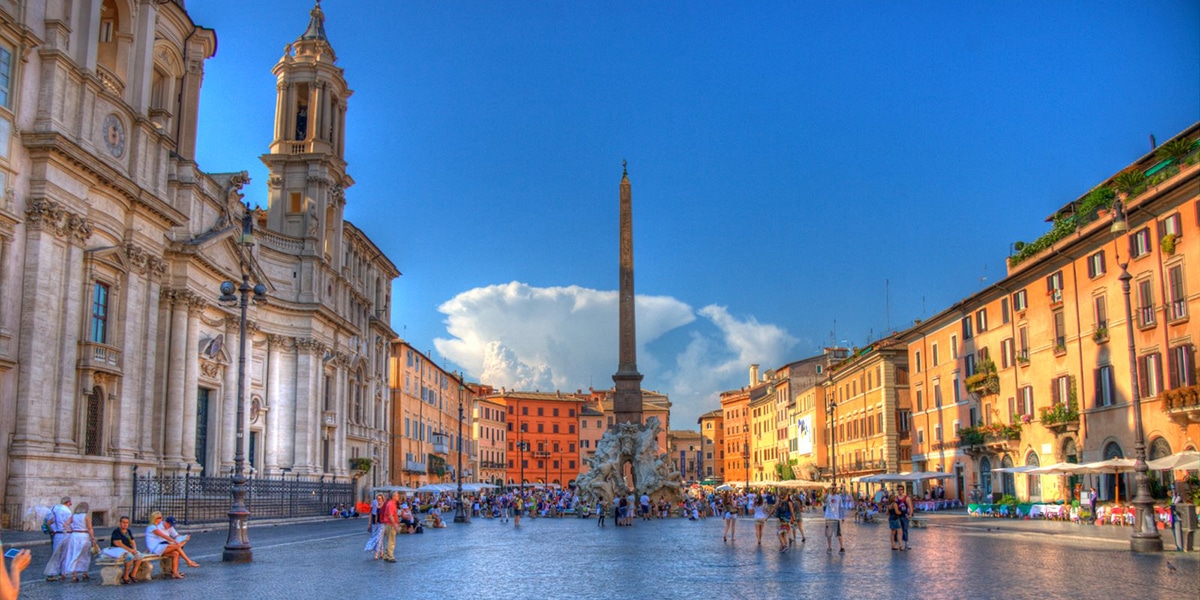
The large Piazza Navona is one of the most prominent places in all of Rome, one of its most central squares and a meeting point for pedestrians. In it you can see beautiful old buildings, various fountains and monuments, as well as a great atmosphere that is always present. It is one of the strong points of the visit to the city of Rome.
Already in ancient times it was an important place, but today the Piazza Navona is one of the most amazing squares and representative of all Rome. In it we can enjoy both the art that is in its fountains and the nearby restaurants and terraces that make this square an essential place.
History of Piazza Navona
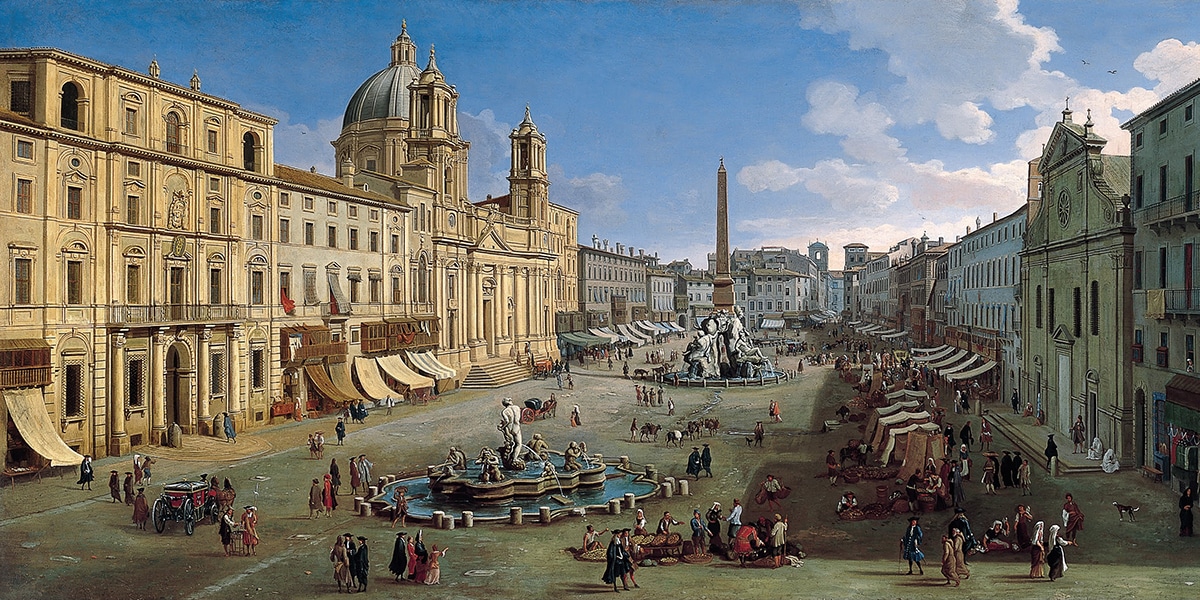
This square rises over the place where the Stadium was, ordered to erect by the emperor Domitian. This stadium was built for several centuries and hosted athletic, musical and equestrian games. Already during the Middle Ages, buildings began to be built on the ruins of the Roman stadium. In the XNUMXth century, the project for this place as a central square in the city really emerged due to the transfer of the market that was in the Capitol. It was the mandate of Pope Innocent X that brought to the square the splendor that it enjoys today, with its baroque design and fountains. The market that was held here moved to Campo de Fiori square. A curious ritual was also carried out whereby on Saturday and Sunday in August the drains of the fountains were covered so that the central area of the square was flooded and everything remained like a lake.
The three sources
This square has a rectangular shape, preserving the same route as the old Stadium, with the buildings on the area that would be the stands. Several fountains stand out in its center and are one of its greatest attractions. They are three large fountains with sculptural pieces of great importance and beauty that we are going to detail.
fountain of the Four Rivers
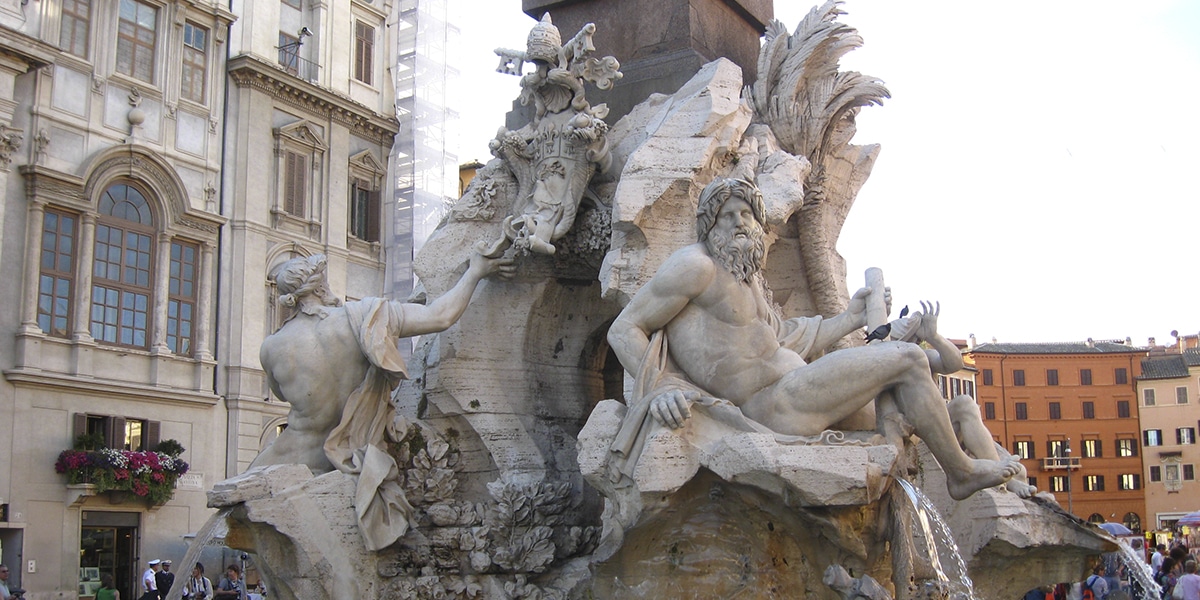
This font that can be translated as the Fountain of the Four Rivers is in the center of the square and it is the most important. Designed by Bernini in the XNUMXth century in the Baroque style. Its great obelisk stands out and also the four enormous sculptures that are figures representing great rivers of the four continents. In the highest part is the dove of the Holy Spirit. In the fountain you can also see different sculptures of animals, such as the lion, the crocodile or the sea serpent.
Fountain of Neptune
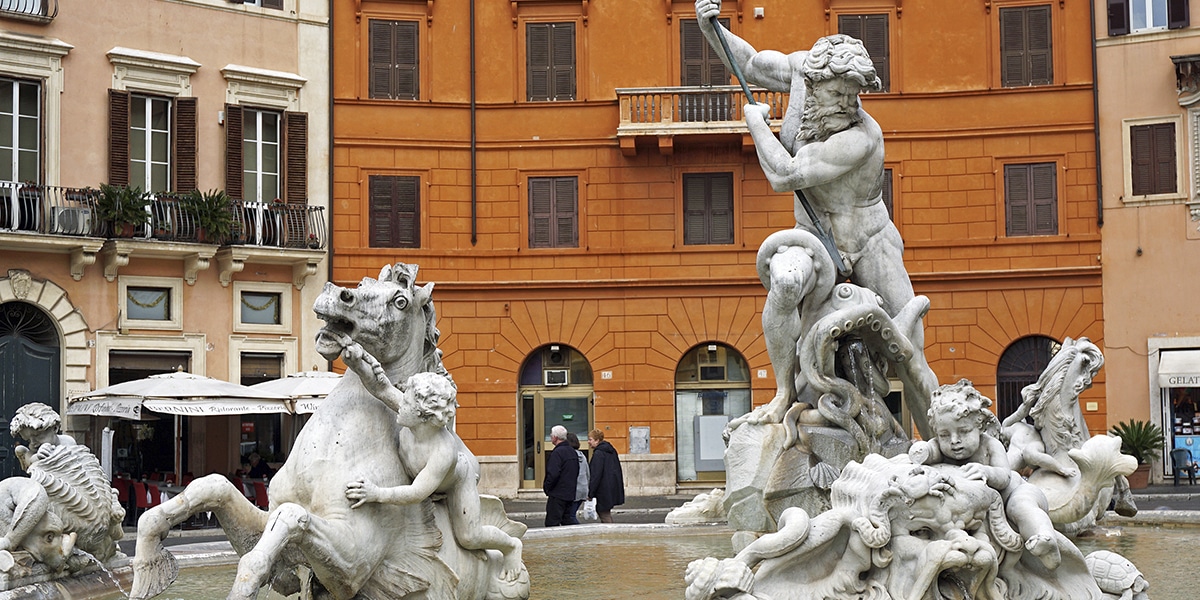
The Fountain of Neptune is located in the North area of Piazza Navona. This fountain was devised by the sculptor Giacomo della Porta, with a large base and a statue of Neptune attacking sea lions.
Moorish Fountain
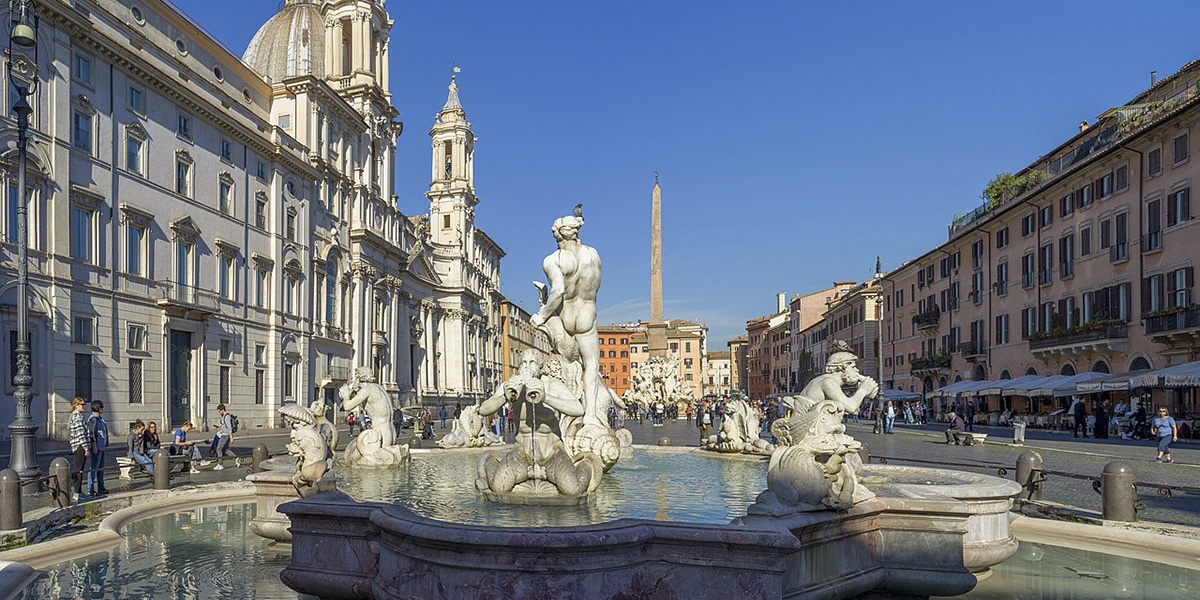
This is the another fountain in the square, which is located in the southern area. It represents an African standing on a seashell fighting a dolphin surrounded by four newts. Although the fountain was designed by Giacomo della Porta, later the central statue, created by Bernini, was added.
Saint Agnes in Agony
This church is located in an area where the stadium bleachers used to be. It is a church in Baroque style, like other elements of the square, created by order of Pope Innocent X. Its baroque exterior is very beautiful, but it is also worth going inside, where you can see the great dome, where there is a fresco with the Assumption of Mary. Inside you can also see a rich sculptural decoration with works such as the Death of Saint Alexius, the Martyrdom of Saint Eustace, the Death of Saint Cecilia or the Monument Tomb of Pope Innocent X. This church was erected by Rainalidi but also by Borromini .
Pamphili Palace
this beautiful Palace currently houses the Brazilian embassy. Borromini also collaborated in its creation and in it you can see a whole gallery of frescoes by Pietro da Cortona. Before being sold to Brazil, it had several uses, since over the centuries its importance declined.
Braschi Palace
Even though this neoclassical building It does not look like a palace to us, it is also a place of interest in Piazza Navona. Today it houses the Museo di Roma inside, telling the history of the city from the Middle Ages to the XNUMXth century. It is declared a cultural asset and breaks with the typical baroque architecture of the square.
Church of Our Lady of the Sacred Heart
The origin of the church dates from the XNUMXth century, although the building we see today is quite recent. The facade is quite recent but it is also a historical building, formerly known as the Church of Santiago de los Españoles.